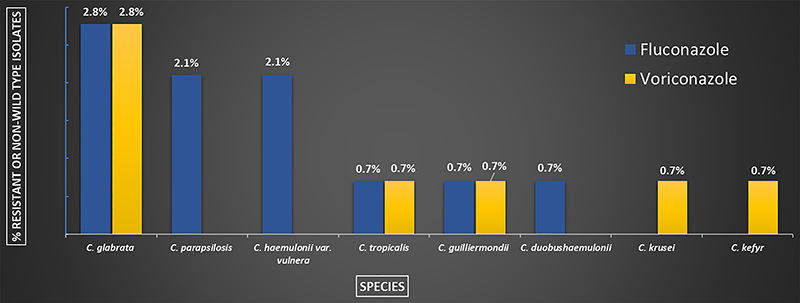This study aimed to evaluate the frequency of cryptic Candida species from candidemia cases in 22 public hospitals in São Paulo State, Brazil, and their antifungal susceptibility profiles. During 2017 and 2018, 144 isolates were molecularly identified as 14 species; C. parapsilosis (32.6%), C. albicans (27.7%), C. tropicalis (14.6%), C. glabrata (9.7%), C. krusei (2.8%), C. orthopsilosis (2.8%), C. haemulonii var. vulnera (2.1%), C. haemulonii (1.4%), C. metapsilosis (1.4%), C. dubliniensis (1.4%), C. guilliermondii (1.4%), C. duobushaemulonii (0.7%), C. kefyr (0.7%), and C. pelliculosa (0.7%). Poor susceptibility to fluconazole was identified in 6.4% of C. parapsilosis isolates (0.12 to >64 µg/mL), 50% of C. guilliermondii (64 µg/mL), 66.6% of C. haemulonii var. vulnera (16-32 µg/mL), and C. duobushaemulonii strain (MIC 64 µg/mL). Our results corroborated the emergence of C. glabrata in Brazilian cases of candidemia as previously reported. Importantly, we observed a large proportion of non-wild type C. glabrata isolates to voriconazole (28.6%; <0.015 to 4 µg/mL) all of which were also resistant to fluconazole (28.6%). Of note, C. haemulonii, a multidrug resistant species, has emerged in the Southeast region of Brazil. Our findings suggested a possible epidemiologic change in the region with an increase in fluconazole-resistant species causing candidemia. We stress the relevance of routine accurate identification to properly manage therapy and monitor epidemiologic trends.
Candidemia; Drug resistance; Candida haemulonii; Candida glabrata; Echinocandins

 Thumbnail
Thumbnail
